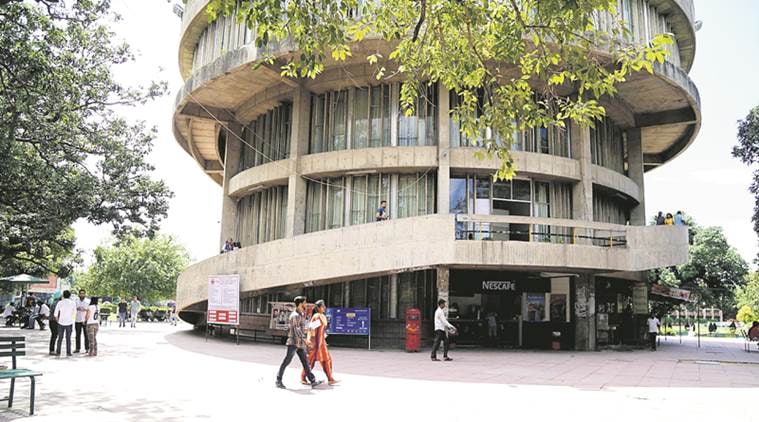 Panjab University (Express Photo by Sahil Walia/File)
Panjab University (Express Photo by Sahil Walia/File)
PANJAB UNIVERSITY needs to move rapidly from manual processes of basic student services to ease of access by digitalising their records in order to join the Digital Indian bandwagon. The two factors that will play a major role in this transition would be the varsity’s enrolment in National Academic Depository (NAD) and its web presence.
The university’s web presence is well accounted for compared to other universities in Punjab and India along with a decent spot among varsities across the world as suggested by Webometrics Ranking of the World Universities. It ranks first among Punjab’s universities, 43rd among Indian universities and its world ranking is 2,061. This was addressed in a paper on Webometric and Technology Analysis of Websites of Selected Universities of Punjab during the inauguration of the three-day international conference on Responsible Research and Innovation in Science, Management and Education in collaboration with the London School of Management Education.
The presenter, Suman Sumi, assistant librarian, AC Joshi, Librarian, PU, investigated the websites of select Punjab universities on the basis of web impact factor, hyperlink analysis and design.
Sumi said, “I looked at the content availability of 11 university websites and used formulae for web page count, self-links, in-links, PDF files, Web Impact Factor and revised Web Impact Factor to analyse their rankings. These factors keep changing; my study is based on data available in January.” The universities she chose were PU, Punjabi University, Guru Nanak Dev University, Baba Farid University of Health Sciences, Guru Ravidas Ayurved University, Punjab Agricultural University, Punjab Technical University, Maharaja Ranjit Singh Punjab Technical University, Guru Angad Dev Veterinary and Animal Sciences University, Central University of Punjab and Rajiv Gandhi National University of Law. She added that the websites of these universities were highly accessed and they had a large web presence as per the findings of her study. “But PU still has policy issues and does not know the proper way to implement basic services that include access to student records online, online transcript evaluation and availability of e-degrees,” Sumi further stated.
While the varsity awarded e-degrees at the annual convocation this year, she added that students did not get online degrees as PU was yet to be part of NAD; only honorary degrees were given online as trial.
Other universities such as GNDU or PTU have online application and payment system for acquiring transcripts. At PU, the application form to get transcripts can be downloaded from the university website and the rest of the procedure is manual.
Only honorary degrees awarded online
While the varsity has signed a pact with the government to implement NAD, the plan is yet to take off. NAD is a 24×7 online storehouse of all academic awards digitised by institutions. It is secure and any student can become a member through a unique ID and will not be required to carry documents physically.
Sumi’s husband, Jatinder Kumar, is a member of the NAD. He has also done a survey on the use of smartphones by PU faculty.
Jatinder said, “PU is working on the process and it will happen soon. In the region, University of Kashmir, Central University of Punjab, Central University of Himachal Pradesh, IIT Mandi and IISER Mohali are already a part of NAD.” He added that student registration under NAD was mandatory through Aadhaar or any other government identification. Though there is no guarantee of data safety, the NAD can stem fake certificate rackets. “Students can directly contact NAD for their certificates and other universities where they apply later can contact them for consent through this system.”